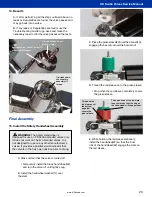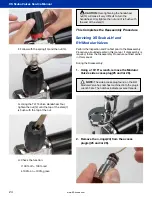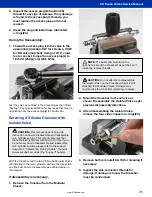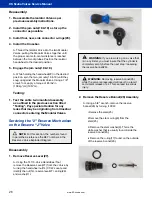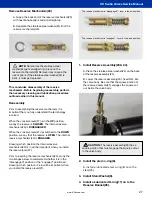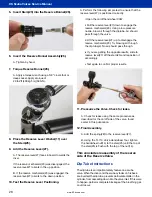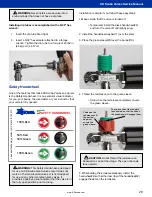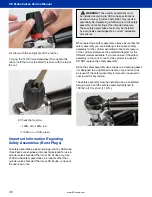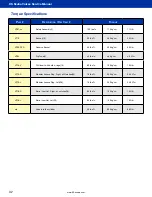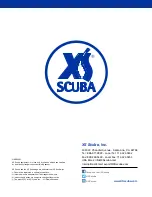
28
www.XSscuba.com
XS Scuba Valves Service Manual
5. Insert Stem(25) into the Reserve Bonnet(26).
6. Insert the Reserve Bonnet Assembly(26).
A. Tighten by hand.
7. Torque Reserve Bonnet(26).
A. Apply a torque wrench using a 5/8” crow’s foot or
deep socket. Apply a torque of
29 lbs*ft (400 kg*cm) (39 N*m).
8. Place the Reserve Lever Washer(11) over
the Stem(25).
9. Add the Reserve Lever(27).
A. The reserve lever(27) faces inboard, towards the
diver.
If the reserve mechanism(23) was disengaged, the
reserve lever(27) orients in the up position.
B. If the reserve mechanism(23) was engaged, the
reserve lever(27) orients to the down position.
10. Test the Reserve Lever Positioning.
A. Perform the following simple test to ensure that the
reserve lever(27) is positioned correctly.
i Open the on/off handwheel CCW.
ii Pull the reserve lever(27) down to engage the
reserve mechanism(23). Using a low-pressure
nozzle, blow air through the diptube. Air should
pass through the valve.
iii Lift the reserve lever(27) up to disengage the
reserve mechanism(23). Try blowing air through
the dip tube(4). No air should pass through.
iv If you are getting the opposite results, slide to
reserve lever(27) off the stem(25) and reposition it
accordingly.
v Test again to confirm proper results.
11. Pressurize the Valve. Check for leaks.
A. Check for leaks using the same procedure as
described for the on/off side of the valve, found
earlier in this publication.
12. Final Assembly.
A. Add the spring(28) to the reserve lever(27).
B. Using the TL113, Valve Handwheel Tool, tighten
the handwheel nut(14) to the stem(25) until the top of
the stem(25) is flush with the top of the nut(14).
This concludes reassembly of the reserve
side of the Reserve Valve.
Dip Tube Instructions
The dip tube is an important safety feature on a scuba
valve. When the diver, and the scuba cylinder on his back,
are inverted, the dip tube, prevents particulate matter in the
cylinder, from cascading down into the valve inlet. If this were
to happen, partial or complete blockage of the breathing gas
could occur.










